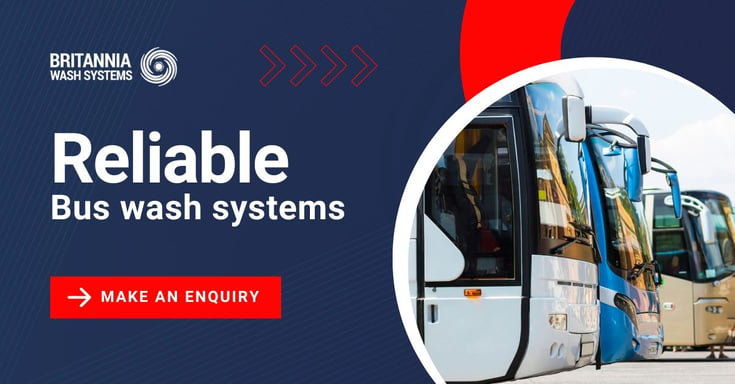
How Often Should You Wash A Bus?
When pressure is on to get your fleet of buses on the road, taking them out of service to carry out cleaning may not be top of your priority list. After all, a vehicle that is undergoing a bus wash in the depot is not available to pick up fare-paying passengers.
Nothing, however, could be further from the truth. Bus washing is as important as engine maintenance and servicing, because dirty vehicles project an unprofessional vision for your brand, discourage passengers from boarding, and may be susceptible to premature bodywork problems, such as corrosion. Filthy windows are also a safety hazard which, when you’re responsible for the safety of tens of people, isn’t something to be ignored.
So, how often should your fleet be washed and what are the key considerations when planning your washing schedule?
The Golden Rule Of Bus Washing
While it’s difficult to be precise about how often you should wash your fleet, a general rule of thumb is at least once a week. Routine upkeep helps to prevent the accumulation of dirt, dust, and grime that, left unchecked, can spoil the vehicles’ vibrant and attractive appearance.
The cleanliness of buses is also an important safety issue: if the driver’s view through the windscreen is obscured, they may not be able to spot hazards quickly enough to take action to protect passengers. Even dirty numberplates may mean your business commits an offence and could result in financial penalties.
Environmental Considerations
In certain situations, it may be necessary to increase the frequency of your fleet’s washing. Buses which operate in regions with high levels of environmental contaminants, such as dust or pollution, may require more frequent attention to counteract the increased buildup of unsightly residue. While it is easy to assume this is most likely in busy city centres, buses that travel along rural roads are equally likely to become dirty, particularly in autumn and winter when the weather is poor and agricultural vehicles are on the roads.
Why Method Matters
While it is crucial to adhere to a regular washing schedule, the method used also plays an important role. Automatic bus washing systems are highly effective in providing a fast all-over clean; on occasion, however, high-pressure water jets or steam cleaning may be more efficient in eradicating stubborn dirt and grime, ensuring a thorough clean.
Beyond Aesthetics: Longevity And Protection
Regular bus washing is not solely about cosmetic improvements, but is also a proactive measure to extend the lifespan of each vehicle’s paint and bodywork. The accumulation of dirt and grit salt can, over time, cause corrosion on the bodywork, potentially shortening the bus's operational lifespan and necessitating costly repairs. Regular cleaning, including under the chassis and inside wheel arches, will remove potentially harmful substances and prevent rust from taking hold.
Get In Touch Today
At Britannia Wash Systems, we can help you to choose a bus wash system that meets your business’s needs and delivers an excellent return on investment. For professional advice, please call us on 01789 400096 or send us a message.
Image Source: Canva
.webp?width=249&height=77&name=Britannia-logo%20(1).webp)

